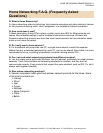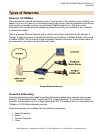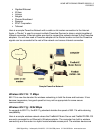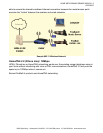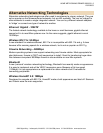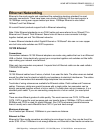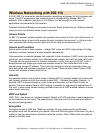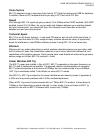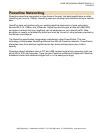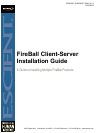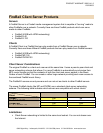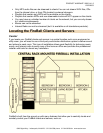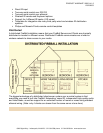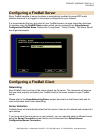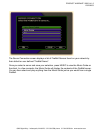HOME NETWORKING PRIMER WD005-1-2
12/22/2003
6325 Digital Way Indianapolis, IN 46278 317.616.6789 phone 317.616.6790 fax www.escient.com
Form Factors
802.11b adapters come in two major form factors. PC Cards for laptops and USB for desktops.
In addition, there are PCI adapters that let you plug a PC Card into a PCI Slot.
Speed
A full strength 802.11b signal will get you about 3.5-4.5 Mbps without WEP enabled. With WEP
enabled, expect 2.5-3.5 Mbps. As you put walls and distance between your wireless adapter
and your access point, your speed will drop. Don’t expect to put more than a few walls
between you and your access point.
Technical Specs
802.11b is a half duplex protocol – it can send OR receive, but not both at the same time. In
addition it uses the same 2.4 GHz range as many cordless phones so plenty of opportunity
exists for interference. Use 900Mhz cordless phones if using 802.11b in the same area.
Distance
Distance will very widely depending on which wireless networking device you are using, what
kind of antenna it uses, the construction materials in your home, electrical interference, and
capabilities of the wireless receiver. Some people have used directional antennas to get some
serious range out of their 802.11b products – miles!
Faster Wireless 802.11g
The 802.11g spec was drafted in Nov of 2001. 802.11g operates on the same frequency as
802.11b and is backwards compatible. The planned common implementation of consumer
802.11g devices operate at a maximum of 22Mbps but can communicate at up to 54Mbps.
802.11g is sometimes called 'Turbo Mode' on some 802.11b cards.
Like 802.11b, 802.11g is subject to the same interference and security issues. It operates at
2.4Ghz and may cause problems with 2.4Ghz cordless telephones.
When a 802.11g product communicates with an 11Mbps 802.11b product, it drops down to
11Mbps or less depending on signal strength. In other words, if you purchase an 802.11g
product for use with an 802.11b access point, expect only 11Mbps.



